The True Pelvis is involved in the process of arrival, thus named obstetric pelvis/true pelvis. The false pelvis is actually a part of the abdominal cavity suitable. So, the student must understand its size, form, and measurements in detail.
The division of pelvis is done into the false or greater pelvis, situated above and true or lesser pelvis, situated below. The Pelvic inlet is a plane of division created by the sacral promontory behind and linea terminalis, situated at the sides and front. The ilium, the iliopectineal line (pecten), and the pubic crest follow the linea terminalis from behind as a continuous line.
Regions of The True Pelvis
The true pelvis presents the pelvic inlet, pelvic outlet, and pelvic cavity.
Borders of The Pelvic Inlet
- Posteriorly: Sacral promontory and anterior margins of alae of the sacrum.
- Laterally: Arcuate and pectineal lines.
- In front: Upper margin of the pubic symphysis and pubic crests.
Boundaries of The Pelvic Outlet
- Anteriorly: Lower margin of the pubic symphysis.
- Anterolaterally: Conjoint ischiopubic ramus on every side.
- Laterally: Ischial tuberosity on every side.
- Posterolaterally: Sacrotuberous ligament on every side.
- Posteriorly: Tip of the coccyx.
Borders of The Pelvic Cavity
- Anteriorly: Pelvic surfaces of the bodies of the pubic bone, pubic rami, and pubic symphysis.
- Posteriorly: Pelvic surfaces of the sacrum and coccyx.
- Laterally: Pelvic surfaces of the ilium ischium below the arcuate line.
Pelvic Inclination
The pelvic brim and pelvic outlet don’t be located in the horizontal plane when the subject stands erect. The planes of pelvic inlet and pelvic outlet incline downward from behind forward. Consequently, the pla.ne of pelvic inlet creates an angle of about 55 °/ 60 ° to the horizontal plane, and the plane of pelvic outlet forms an angle of 15 ° with the horizontal plane.
Pelvic Planes
The plane of greatest pelvic measurement: It’s an imaginary plane passing anteroposteriorly via the middle of pubic symphysis and junction between S2 and S3 vertebrae.
The plane of least pelvic measurement: Anteroposteriorly it’s an imaginary plane going through the lower margin of pubic symphysis to the tip of the sacrum. Transversely, it’s an imaginary plane going through the ischial spines.
Obstetrical Pelvic Measurements
Pelvic Diameters
Conjugate Diameters
- External conjugate: It’s the space between the upper margin of pubic symphysis to the tip of the spine of the S1 vertebra.
- True conjugate: It’s the space between the midpoint of sacral promontory to the upper margin of the pubic symphysis. It corresponds to the anteroposterior diameter of the pelvic inlet.
- Angled conjugate: It’s the space from the midpoint of the sacral promontory to the lower margin of the pubic symphysis. It’s the most useful measurement medically. Normally it measures about 5 inches (12.5 cm). It can be measured about by per vaginal (P/V) evaluation, of course without distress to the patient.
- Obstetrical conjugate: It’s the shortest distance between the pelvic surface of the pubic symphysis and sacral promontory.
Diameters at The Pelvic Inlet
- Anteroposterior: It goes from the midpoint of the sacral promontory to the midpoint of the upper margin of the pubic symphysis.
- Oblique: It goes from the sacroiliac joint of 1 side to the iliopectineal eminence of the other side.
- Transverse: It’s the maximum transverse diameter of the pelvic inlet (i.e., the best width of the pelvic inlet).
Diameters at The Mid-Pelvic Cavity
- Anteroposterior: It goes from the middle of the pubic symphysis to the middle of the 3rd sacral vertebra.
- Oblique: It goes from the lower end of the sacroiliac joint of a single side to the middle of the obturator membrane of the different side.
- Transverse: It’s the best width of the pelvic cavity.
Diameters at The Pelvic Outlet
- Anteroposterior: It stretches from the tip of the sacrum to the lower margin of the pubic symphysis.
- Oblique: It stretches from the middle of the sacrotuberous ligament of a single side to the junction of the ischiopubic ramus of the opposite side.
- Transverse: It stretches between the inner aspects of both ischial tuberosities.
The amounts of measurement at the pelvic inlet, mid-pelvic cavity, and pelvic outlet of the true pelvis can be easily remembered by the people in the form (in cm).
Obstetrical Pelvic Measurements (In Cm)
| Diameter | At inlet | At mid-pelvis | At outlet |
|---|---|---|---|
| Anteroposterior | 11 | 12 | 13 |
| Oblique | 12 | 12 | 12 |
| Transverse | 13 | 12 | 11 |
During pelvic measurement the obstetricians dismiss the coccyx because of its freedom and they take the tip (apex) of the sacrum as the posterior boundary of the pelvic outlet.
Clinical Significance
- Adaptation of the fetal head in the pelvis during parturition: During the process of parturition, the baby’s head accommodates itself to the measurements of the pelvic cavity in order to go through it easily. Consequently, during fixation of the head of the fetus, the occiput of the head faces toward right/left, i.e., anteroposterior diameter of the head is located transversely at the inlet (13 cm in diameter). Afterward, the head rotates about 90 ° so the occiput of the head generally faces anteriorly, i.e., anteroposterior diameter of the head is located anteroposteriorly at the pelvic outlet (13 cm in diameter).
- Evaluation of the adequacy of the pelvis during obstetrical evaluation: It’s done as follows:
- Transverse diameter of the pelvic outlet is evaluated by measuring the space between the ischial tuberosities along a plane passing on the other side of the anus.
- Anteroposterior diameter of the pelvic outlet is quantified from the pubis to the sacroiliac joint.
- Angled conjugate (most essential) is evaluated by per vaginal evaluation.
- The size of the subpubic arch. In the normal gynecoid pelvis, examiner’s knuckles (with fist clenched) should be comfortably accommodated between the ischial tuberosities below the pubic symphysis.
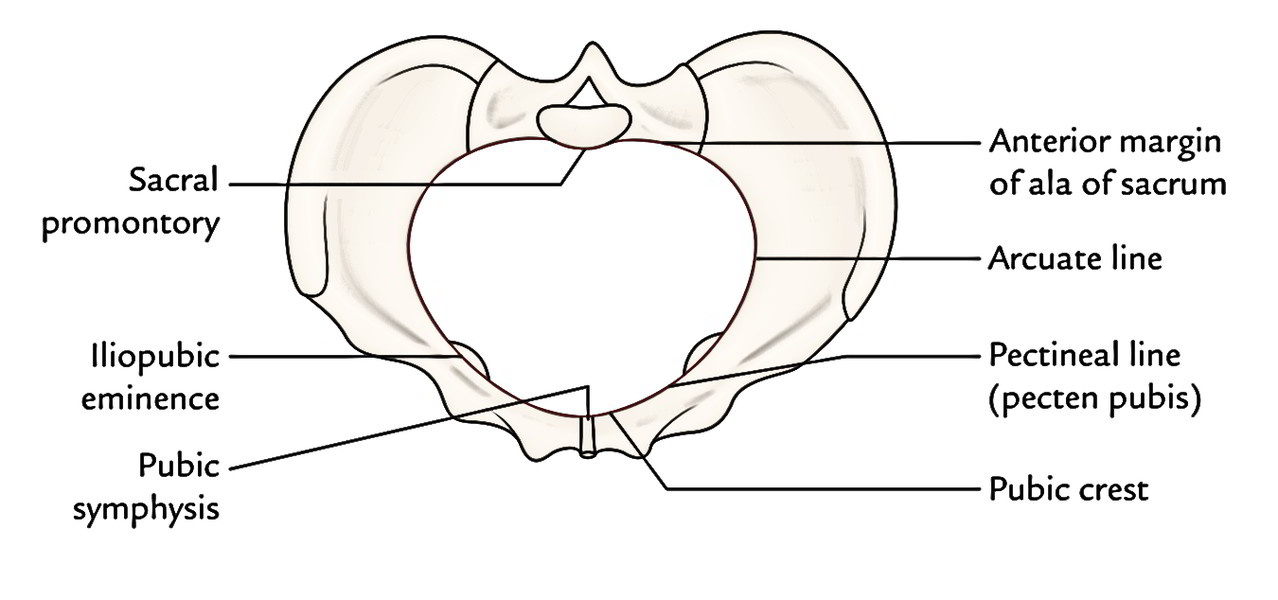
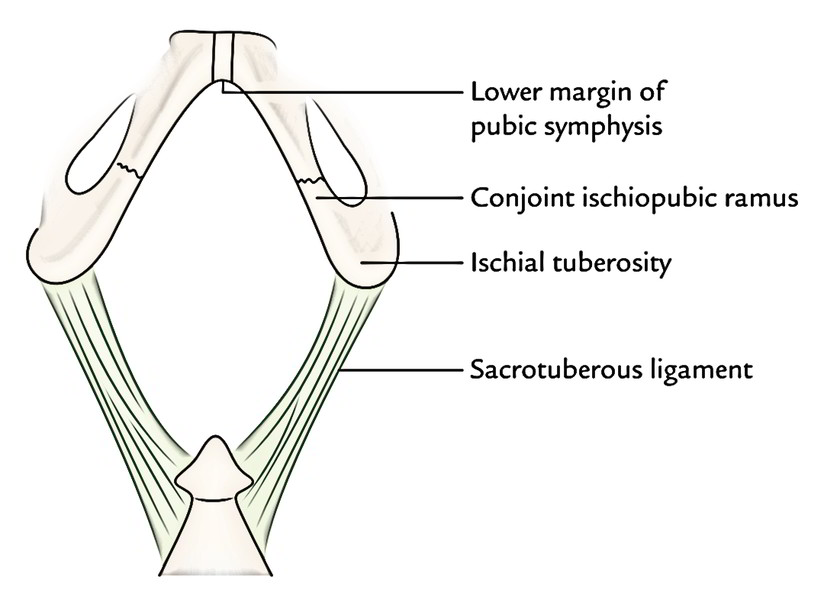
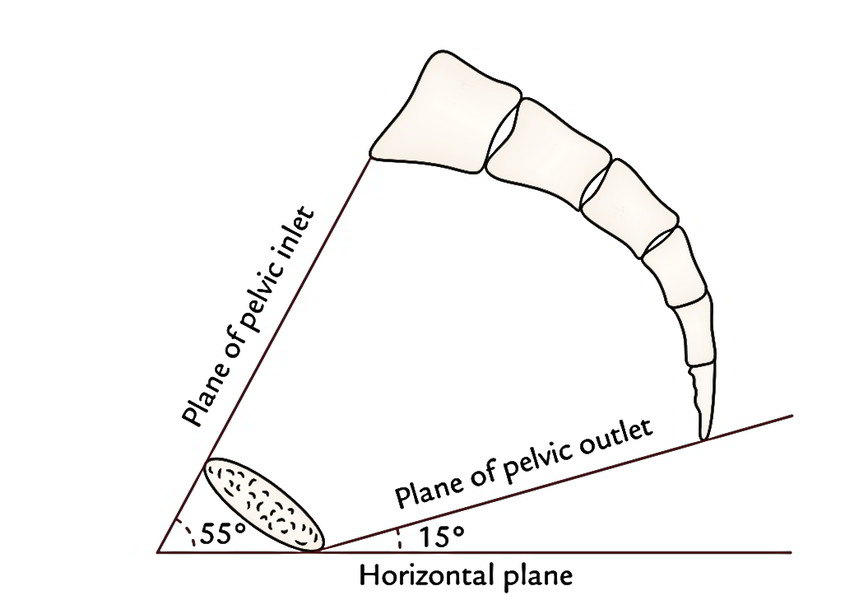
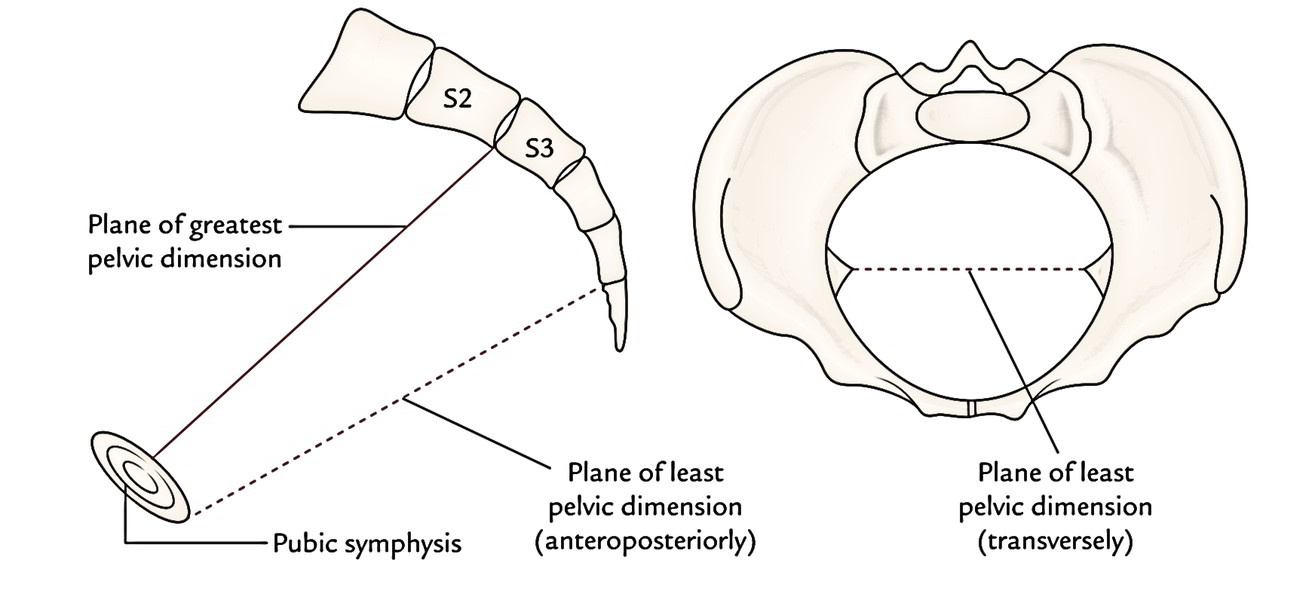
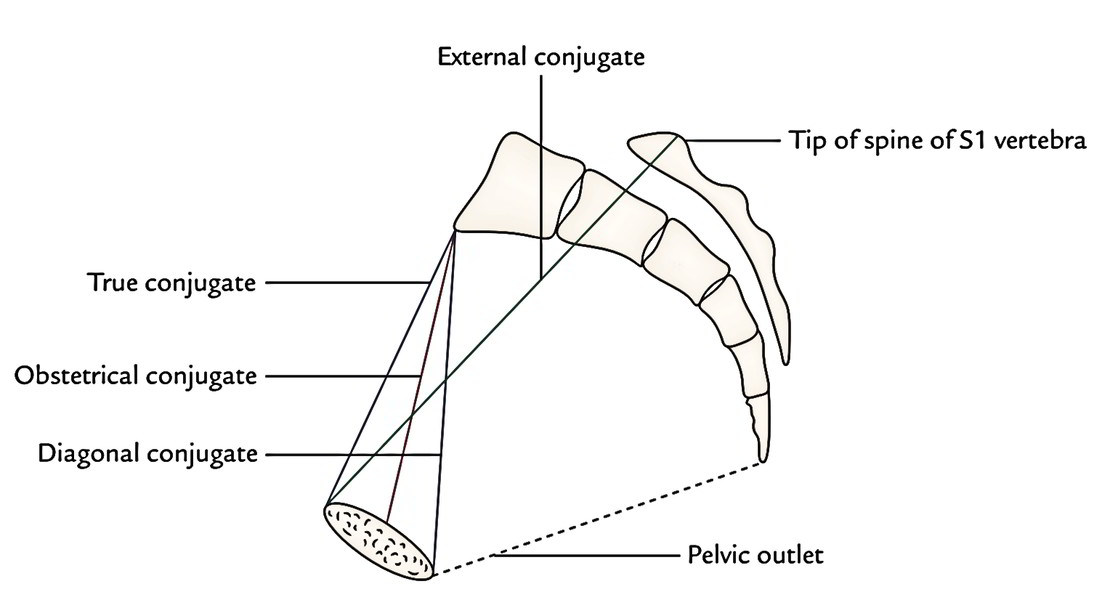
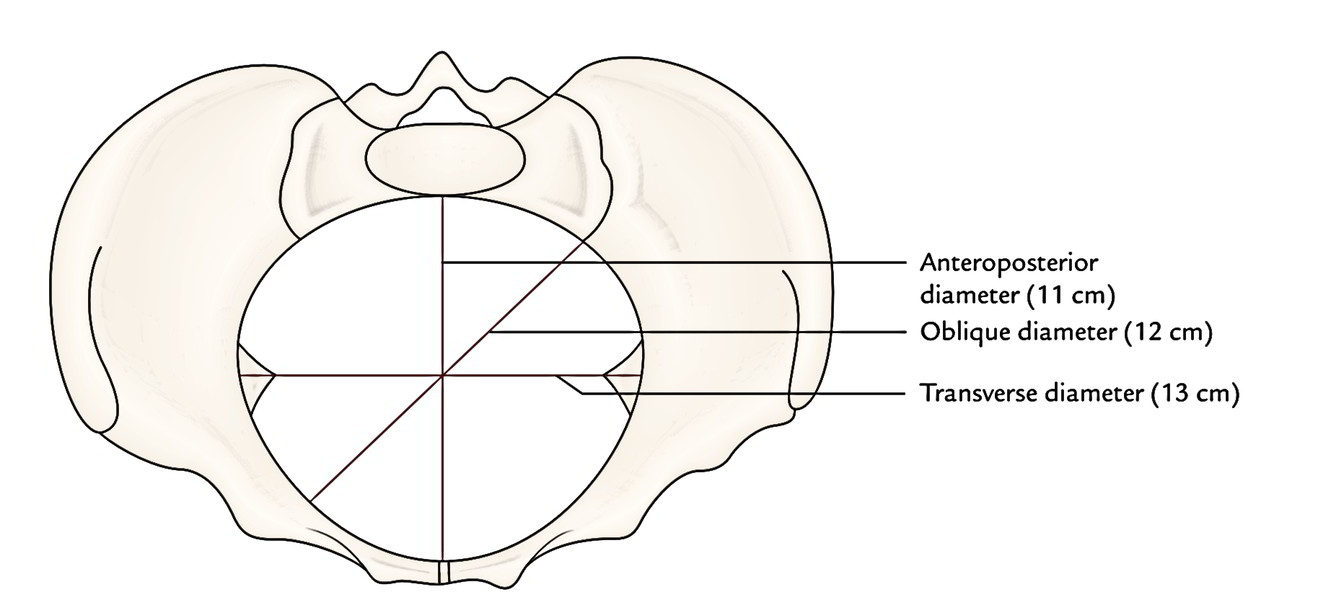
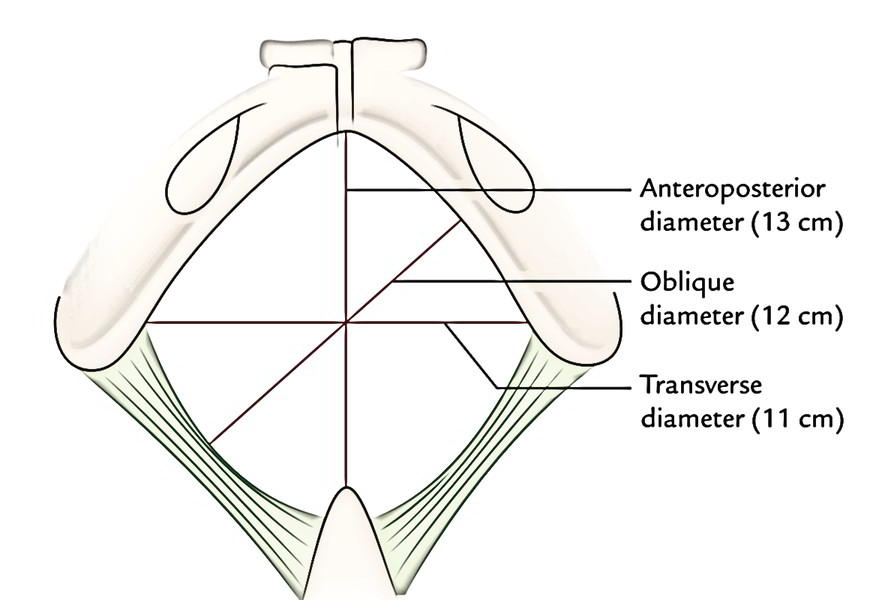
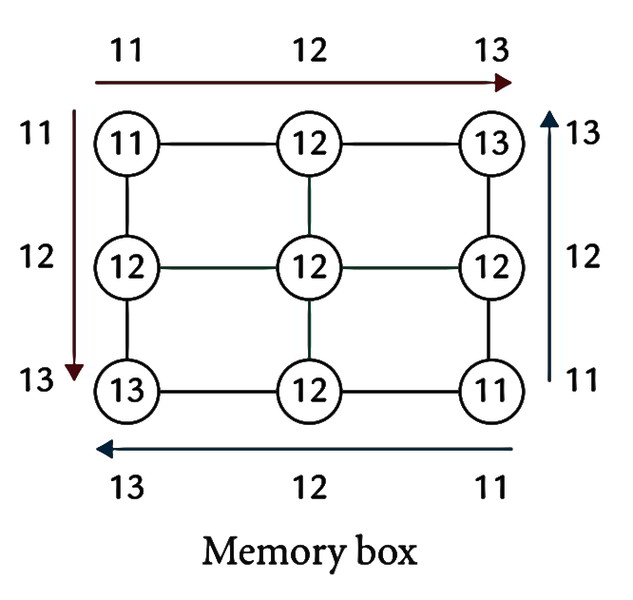

 (63 votes, average: 4.71 out of 5)
(63 votes, average: 4.71 out of 5)